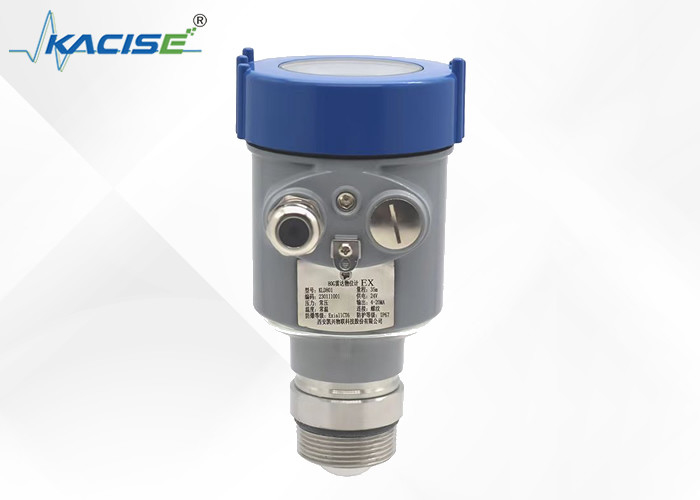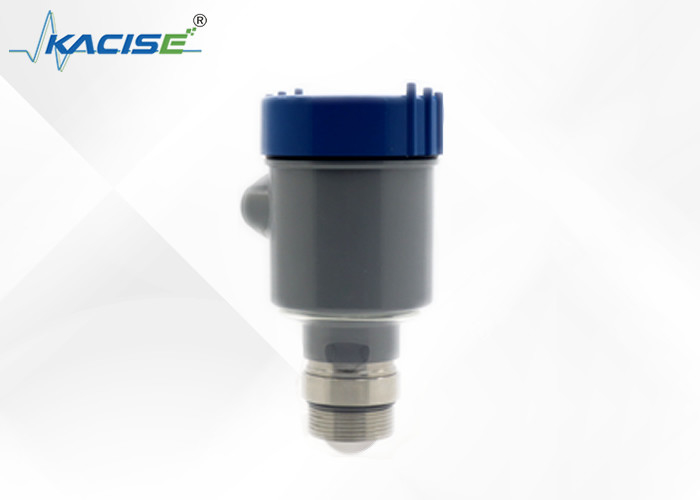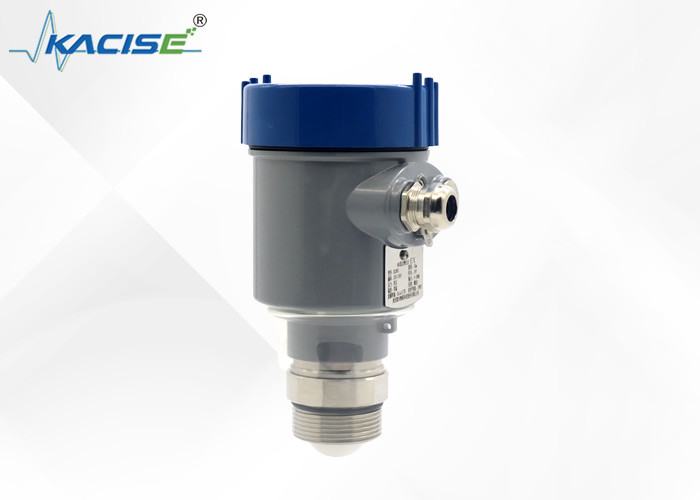Kacise KLD801 OEM 15m 80G RS485 Non Contact Radar Level Transmitter For Septic Tank
Product Attributes
| Attribute | Value |
| Frequency | 80GHz |
| Output | two-wire /4...20mA/HART protocol |
| Explosion-proof | Exia IIC T6 Ga/Exd ia IIC T6 Gb |
| Protection | IP67 |
| Range | 0.1m~100m |
| Medium | liquid, non-corrosive |
| Process pressure | -0.1~0.3 MPa |
| Power supply | Two-wire /DC24V |
Product Description
The Kacise KLD801 OEM 15m 80G RS485 Non-Contact Radar Level Transmitter is specifically designed for septic tanks. It operates at 80G frequency and has a range of 15 meters. With RS485 communication, it enables seamless data transfer. Its non-contact feature ensures minimal interference and accurate level detection, providing reliable solutions for septic tank monitoring.
Product Dimension


Working Principle
The radar antenna transmits narrow microwave pulse which will be reflected back when reaching the surface of the medium tested and then received again by the antenna system. The signals shall be transmitted to the electric circuit and then converted into level signals. As the transmission speed of microwave is so fast, the time used for the microwave transmission to the surface of the medium tested and then reflected back is almost 0.

Technical Features
- Millimeter wave radar, the measurement accuracy can reach up to ±2mm, and the minimum measurement blind zone is 0.05m.
- The smaller antenna size satisfies the measurement of more working conditions.
- A variety of lens antennas, smaller launch angles, more concentrated energy, stronger echo signals, and higher reliability than other radar products under the same industrial and mining conditions.
- It has stronger penetration and can be used normally in the case of adhesion and condensation.
- The dynamic signal range is larger, and the measurement of low dielectric constant media is more stable.
- Multiple measurement modes, radar response in fast measurement mode.
Technical Specification and Model Selections
| Model | KLD801 |
| Medium | liquid, non-corrosive |
| Measuring range | 0.05m~10/20/30/60/100m |
| Process connection | G1½A / 1½NPT thread / flange ≥ DN40 |
| Process temperature | -40~80℃ |
| Process pressure | -0.1~0.3 MPa |
| Antenna size | 32mm lens antenna |
| Antenna material | PTFE |
| Accuracy | ±1mm |
| Protection class | P67 |
| Center frequency | 80GHz |
| Launch angle | 3° |
| Power supply | Two-wire /DC24V / Four-wire system/DC12~24V / Four-wire system/AC220V |
| Casing | aluminum/plastic/stainless steel |
| Signal output | two-wire /4...20mA/HART protocol Four-wire system: 4...20mA/ RS485 Modbus |
Installation Requirements
When installing the instrument, avoid installing it above the material inlet, and try to avoid various objects that affect the signal, such as stirring paddles, etc.


Electrical Connection
Power Supply (4~20) mA/HART(2 wire)
The power supply and the output current signal share a two-core shielded cable. Please refer to the technical data for the specific supply voltage range.
(4~20) mA(4 wire/6 wire)
The power supply needs to be powered separately, and a four-core shielded cable is used for the power supply and current signal (the current signal and the RS485 interface can be output at the same time, and a six-core shielded cable is required for simultaneous output).
RS485/Modbus
The power supply needs to be powered separately, and a four-core shielded cable is used for power supply and digital signal. (The current signal and the RS485 interface can be output at the same time, and a six-core shielded cable is required for simultaneous output).
Connection Diagram

Safety Guide
Please observe the requirements of the local electrical installation regulations! Follow local regulations for personnel health and safety. All operations on the electrical components of the instrument must be completed by professionals who have received formal training. Please check the nameplate of the instrument to ensure that the product specification meets your requirements. Please ensure that the power supply voltage is consistent with the requirements on the nameplate of the instrument.
Grade of Protection
This instrument fully meets the requirements of protection class IP66/67, please ensure the waterproofness of the cable sealing head.

How to ensure that the installation meets the requirements of IP67:
- Make sure the sealing head is not damaged.
- Make sure the cable is not damaged.
- Please make sure that the cables used meet the requirements of the electrical connection regulations.
- Before entering the electrical interface, bend the cable down to ensure that water will not flow into the housing
- Please tighten the cable gland
- Please plug the unused electrical interface with a blind plug
Sensor Linearity
Beam Angle
The beam angle is the beam angle at which the energy density of the radar wave reaches half of its maximum value (3dB width). Microwaves emit signals out of beam range and can be reflected by interfering objects.

| Lens Antenna Diameter | Φ32mm lens Antenna | Φ42mm lens Antenna | Φ76mm lens Antenna | Φ74.7mm lens Antenna with air purge |
| Beam Angle | 7° | 6° | 3° | 3° |
The larger the antenna size and the smaller the beam angle α, the less interference echoes will be generated.
For more accurate measurements, avoid installing any internal devices (such as limit switches, temperature sensors, bases, vacuum rings, heating coils, baffles, etc.) within the range of the signal beam.
Product Showcase


 Your message must be between 20-3,000 characters!
Your message must be between 20-3,000 characters! Please check your E-mail!
Please check your E-mail!  Your message must be between 20-3,000 characters!
Your message must be between 20-3,000 characters! Please check your E-mail!
Please check your E-mail! 



